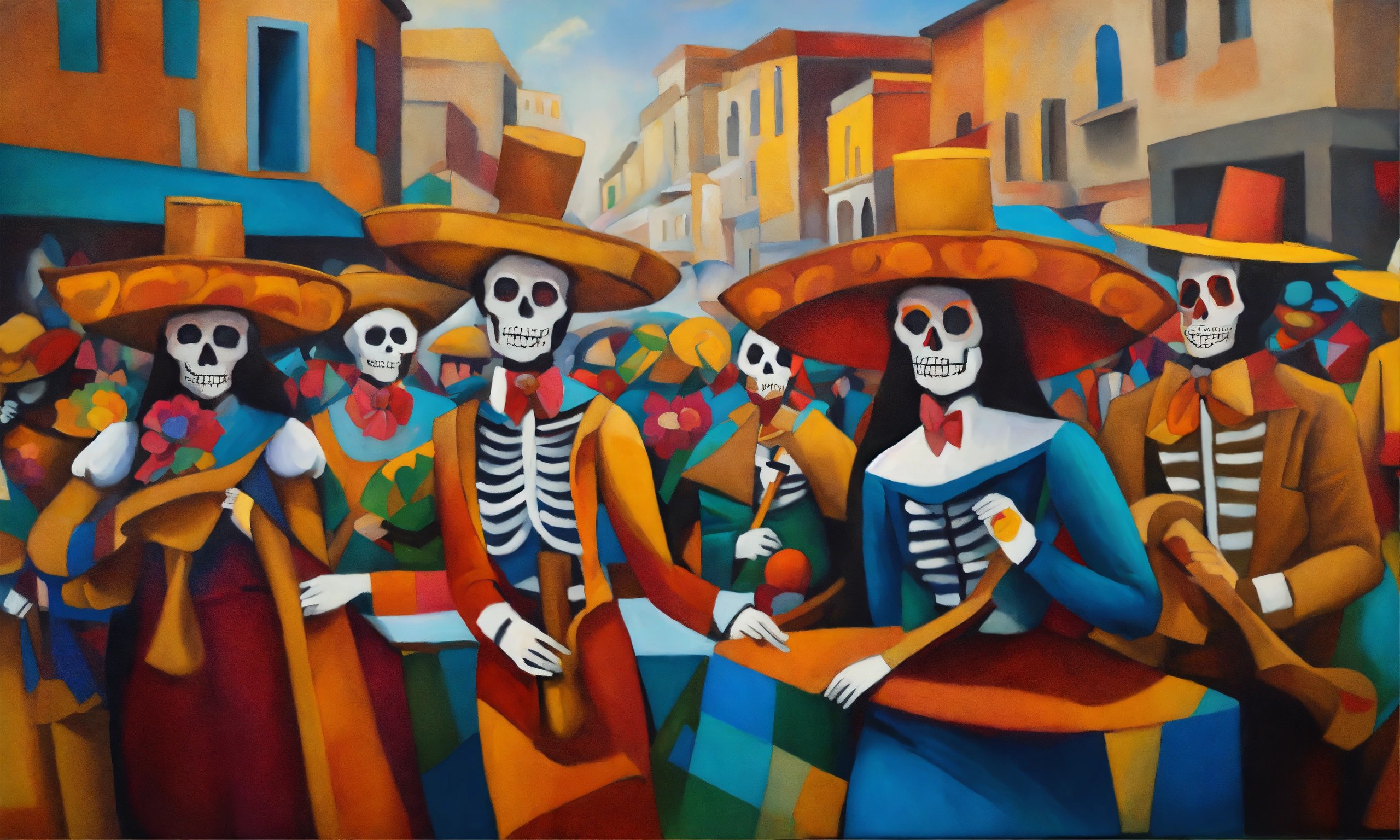Celebrated in several countries of Latin America, Day of the Death (Día de los Muertos) is a rich legacy in culture. Mexico usually steals the show with its colourful celebrations, but Peru honours the dead in a unique manner that deftly combines Indigenous traditions with Christian inspirations. This celebration showcases Peru’s cultural variety as well as a wonderful window into how the living and the dead coexist in the hearts and thoughts of the people.
How Does Peru Celebrate the Day of the Dead?
Usually honored in Peru on November 1st and 2nd, the Day of the Death complements All Saints’s Day and All Souls’s Day. Families using this dual observance can honour the saints and their departed loved ones. The festival reflects the varied cultural fabric of the nation depending on where one lives.
Regional Variations in Celebration
- Andean Region: Andean Region: Día de los Muertos gets more Indigenous taste in Peru’s highlands, particularly in areas like Cusco and Ayacucho. Including tributes to Pachamama (Mother Earth) and the spirits of the ancestors, the event might feature pre- Columbian era indigenous rites. Honouring their ancestors at this period helps the Andes people to build their family bonds since they often believe that their ancestors are vital for their life.
- Coastal Regions: The celebration is sometimes more in line with Catholic customs in coastal towns like Lima. Families usually pay tributes in honour of the departed and visit graves. Customs’ mixing reflects Peru’s complicated history of cultural interaction and colonisation.
- Amazon Region: Indigenous people living in the Amazon may honour the day with distinctive local customs, ceremonies, and offerings reflecting their close relationship to the forest and the spirits of nature.
Traditional Practices
The Day of the Death celebration in Peru is fundamentally based on the conviction that the spirits of the dead return momentarily to the world of the living. Families are reuniting with their departed loved ones in a happy event rather than a sorrowful one.
Building Altars (Ofrendas): To honour their loved ones, families build complex altars both in their homes and at gravesites. Photographs, candles, flowers—especially marigolds—along with other donations cover these altars. From favourite meals to personal items, every object on the altar has meaning and represents a friendly welcome for the souls coming home.
Cemetery Visits: Families visiting cemeteries is among the most meaningful feature of the event. Food, candles, and flowers all help them to clean and embellish the graves of their loved ones. Families often arrange picnics around the gravesites, share food, and remember their dead relatives.
Special Food and Drink: Festivities depend much on traditional cuisine. Special meals include tamales, empanadas, and sweet bread known as pan de muerto—bread of the dead—are made by families. Usually set on the altars, these delicacies represent a shared feast between the living and the dead. Another well-liked choice during this period is the sweet purple corn beverage chicha morada.
Music and Dance: The celebration revolves much on music. Bands are engaged in some areas to perform the deceased’s preferred tunes. In others, relatives get together for customary dances to honor the life of a loved one using rhythm and movement.
Prayers and Remembrance: Families frequently pray for blessings for their deceased souls, in remembrance. They might also share recollections and tales about their loved ones, therefore ensuring that the living carries on with their legacy intact.
What Country is Known for Day of the Dead?
Although Día de los Muertos is observed all around, Mexico is surely more connected with its rich legacy. Particularly after UNESCO named the Mexican festival an Intangible Cultural Heritage of Humanity in 2008, it has become well-known outside. Mexico’s version of the celebration is a worldwide cultural phenomenon thanks in great part to the vivid images—colorful sugar skulls, extravagant altars (ofrendas), and complex face paint.
But Peru and other Latin American nations including Bolivia, Ecuador, and Guatemala also honour their own Day of the Dead. Every nation has modified the festival to suit its own cultural inspirations, hence creating a varied tapestry of customs and rituals.
How is Day of the Dead Celebrated?
Celebrating the Day of the Dead is based on the conviction that the spirits of the dead return to the realm of the living momentarily. This view helps one to establish a link between the living and the deceased, so rendering the celebration happy instead of sad.
Key Elements of the Celebration
- Altars and Offerings:
- Personalized Altars: Families design unique altars in their houses, specifically honouring their loved ones. Usually including a range of objects, these altars feature:
- Photos: Portraits of the departed that arouse happy memories.
- Flowers: Especially marigolds (cempasúchil), whose strong perfume and colour are thought to draw spirits.
- Food: Typical meals the dead liked during their lifetime.
- Candles: Light marks the coming of the spirits and guides them back.
- Incense: Often, coal is burned in order to clean the area and produce a holy environment.
- Personalized Altars: Families design unique altars in their houses, specifically honouring their loved ones. Usually including a range of objects, these altars feature:
- Cemetery Visits:
- Reunion with the Dead: Visiting cemeteries is a moving custom during the Day of the Dead for reunion with the dead. Usually bringing food and beverages to share with their departed loved ones, families tidy and embellish the graves.
- Spiritual Connection: This deed helps us to recognise that death is not an end but rather a continuation of a relationship spanning bodily limits.
- Traditional Food:
- Pan de Muerto: Often fashioned like a skull or crossbones, the sweet bread pan de muerto represents the cycle of life and death.
- Tamales and Empanadas: Typical dishes eaten for the festival are tamales and empanadas.
- Chicha Morada: Often drank during celebrations, Chicha Morada—a traditional drink created from purple corn—symbolizes community and togetherness.
- Cultural Performances:
- Music and Dance: Music and dancing are performed in various areas in cemeteries where families might gather to honour their loved ones.
- Community Events: Parades and public events hosted by some municipalities highlight local bands and artists, helping to create the festive environment.
- Prayers and Rituals:
- Spiritual Practices: Many households include prayers into their festivities in search of blessings and direction from their ancestors.
- Storytelling: Sharing stories about the dead links generations and helps to preserve their memories.
Why is the Day of the Dead So Famous?
The Day of the Dead’s vivid customs and great cultural relevance have earned it popularity all around. The event captures a mentality that welcomes death as inevitable aspect of life and promotes a great respect of the memory of departed people.
Universal Themes of the Celebration
Cultural Richness: Day of the Death’s mix of Indigenous and Catholic customs highlights Latin America’s diverse cultural legacy. This blending of ideas produces a special tapestry of techniques reflecting the variety of the area.
Artistic Expression: Residents and guests alike marvel at the vivid hues, complex patterns, and creative depictions in the altars, decorations, and costumes. The festival lets musicians honour their background and show their originality.
Celebration of Life: Fundamentally, the Day of the Dead is an honouring of life event. Families gather to honour their loved ones by means of stories and laughter, therefore stressing the value of family and community.
Global Recognition: Globally, the festival has become well-known especially following films like Coco and festivities of the Dia de los Muertos in towns like Los Angeles and San Antonio. Popular culture’s depictions have helped people all over to appreciate the legacy.
Educational Opportunities: The festival lets people discover the practices and ideas about death and the next world in Latin American Societies. It starts discussions about mortality, memory, and how other societies understand life and death.
Conclusion
Perched on Peru’s rich cultural tapestry, the Day of the Dead, there is a magnificent festival. Combining Indigenous customs with Catholic rituals helps Peruvians honour their departed loved ones in a way that stresses continuity of life, happiness, and memory. The event reminds us of the value of family and community, therefore guaranteeing that the memories of those who have departed endure in the hearts of the living.
Learning about and interacting with these customs helps us to better appreciate the Day of the Death’s cultural relevance in Peru and in Latin America. Love and memory define this festival, which enhances our shared human experience and lets us honour and treasure our relationships with our loved ones—living as well as dead.




